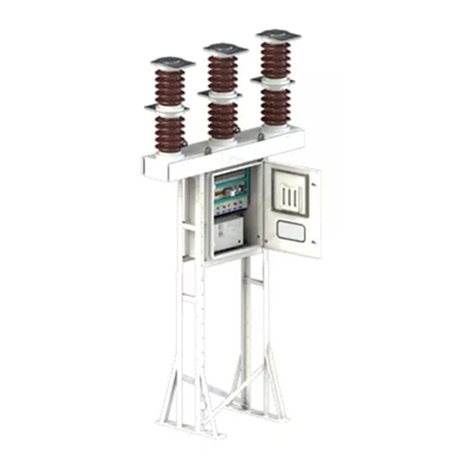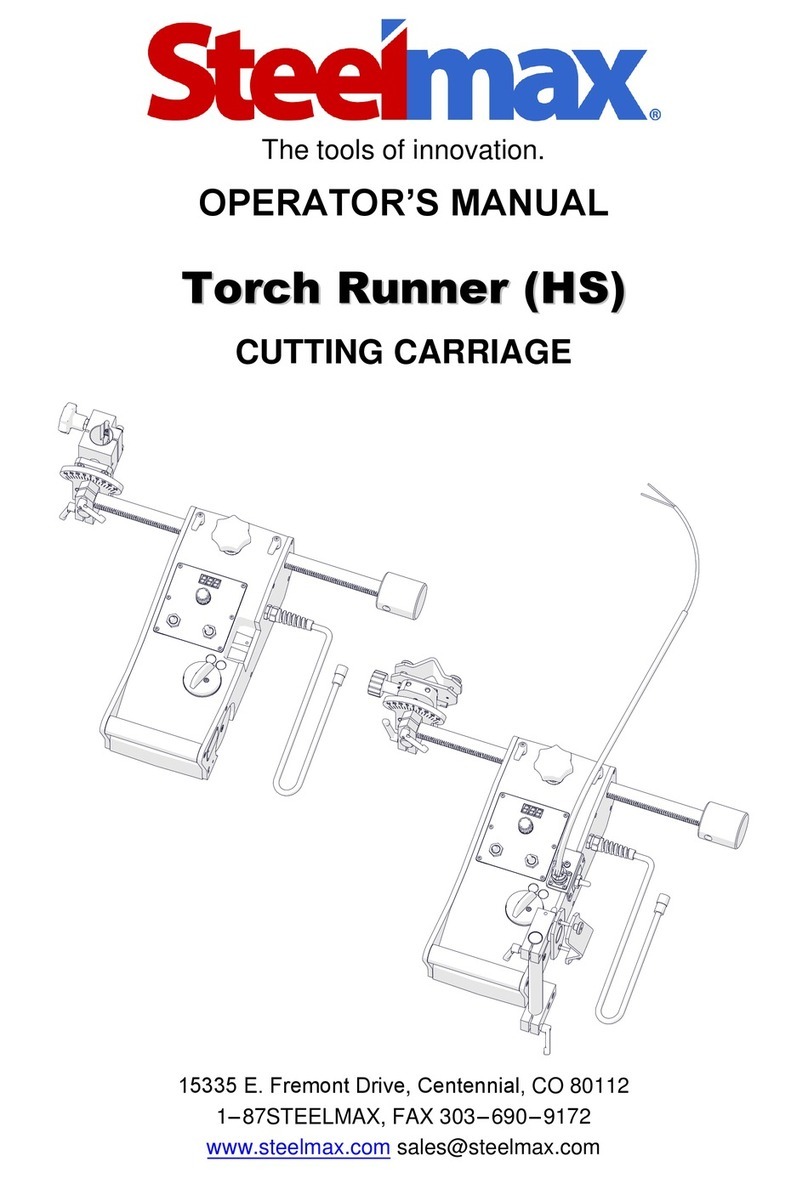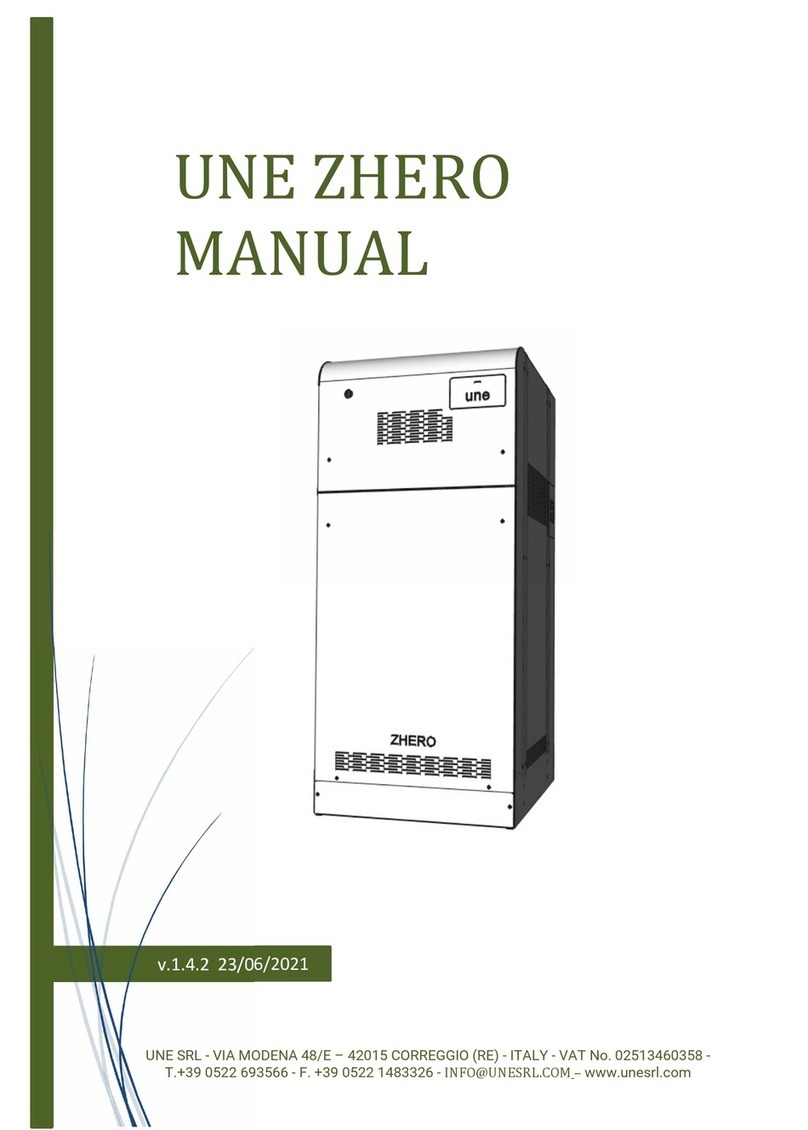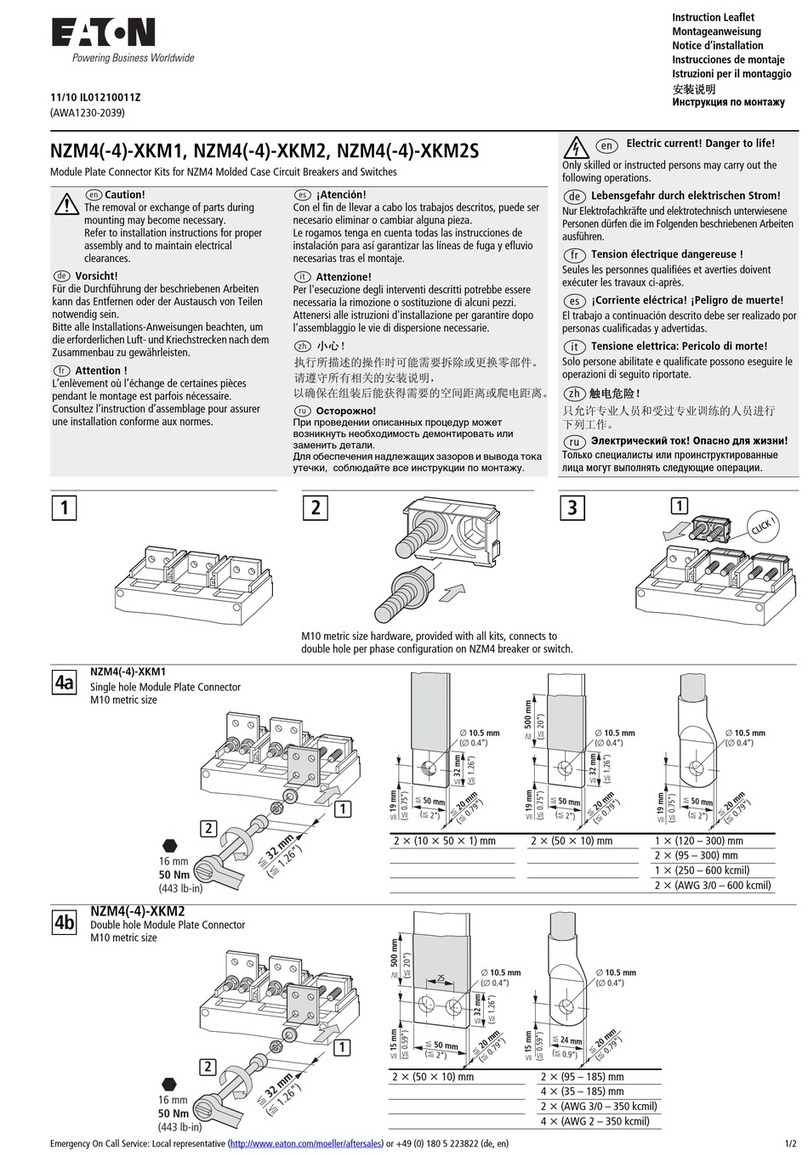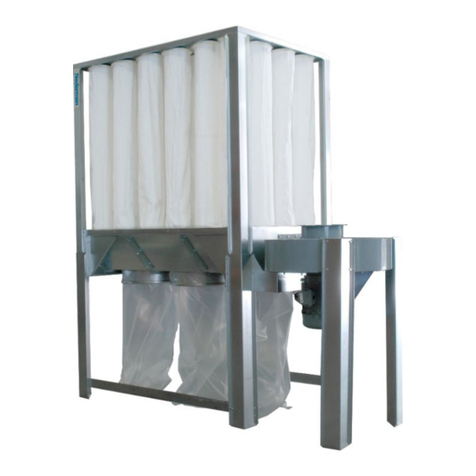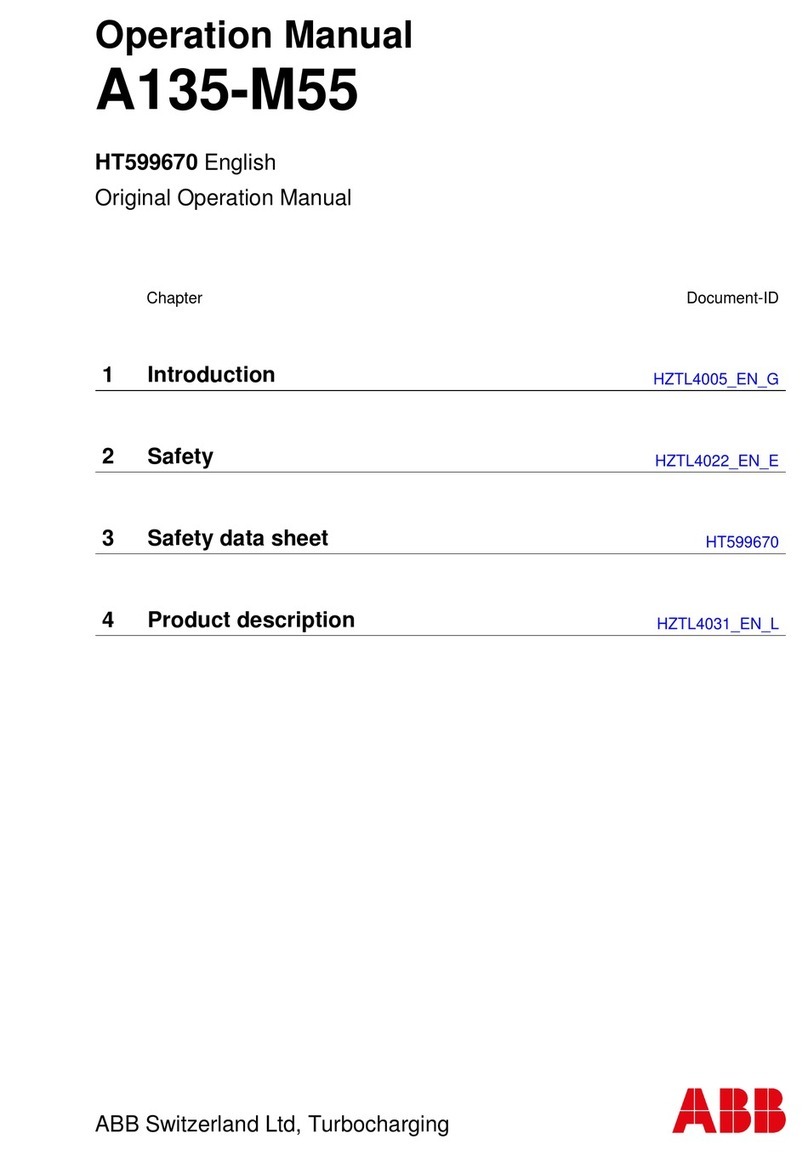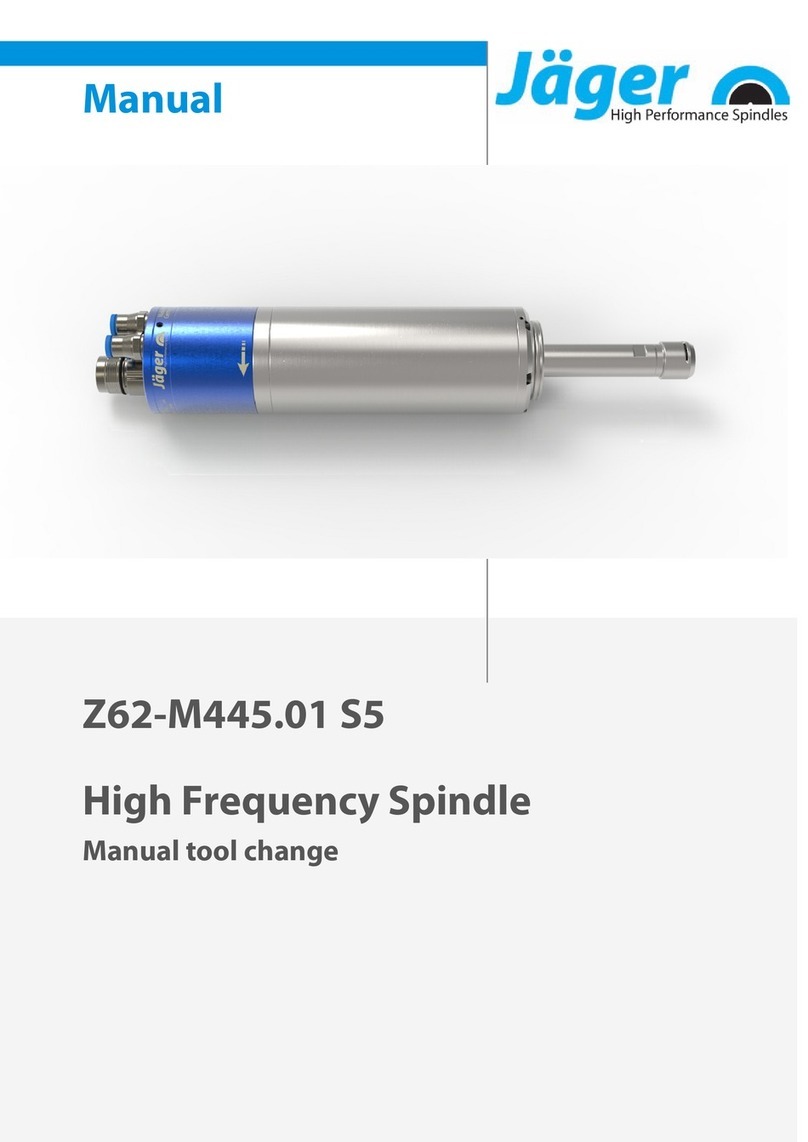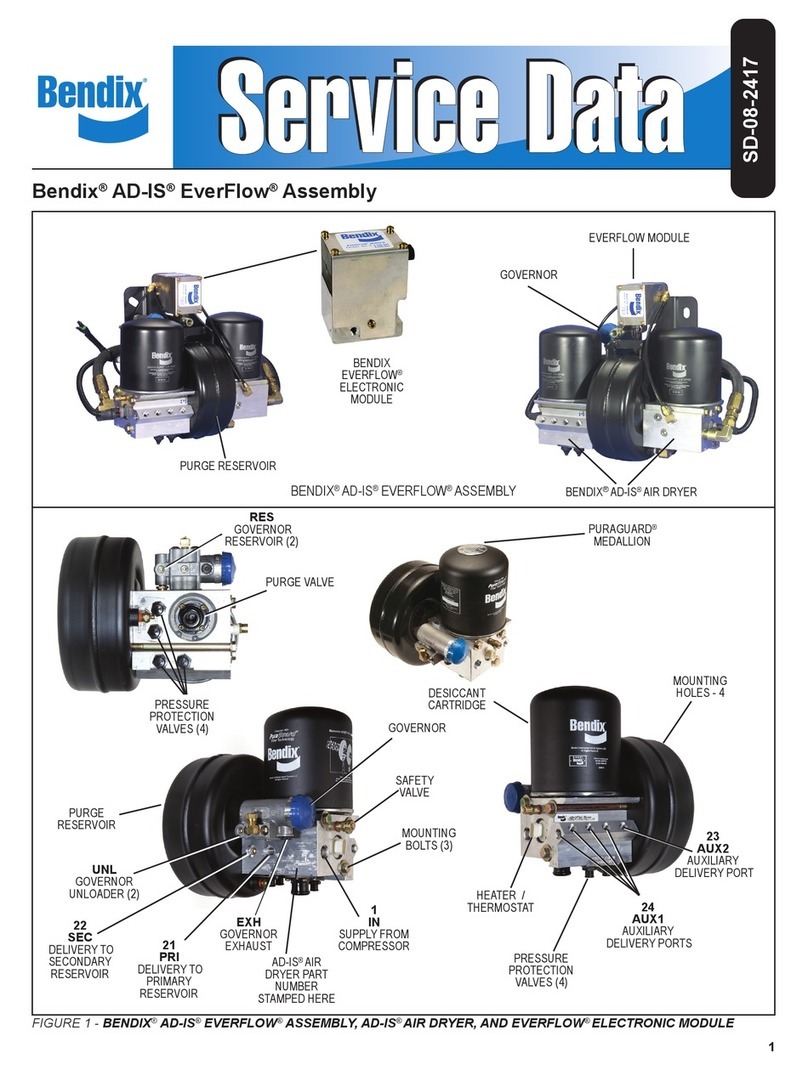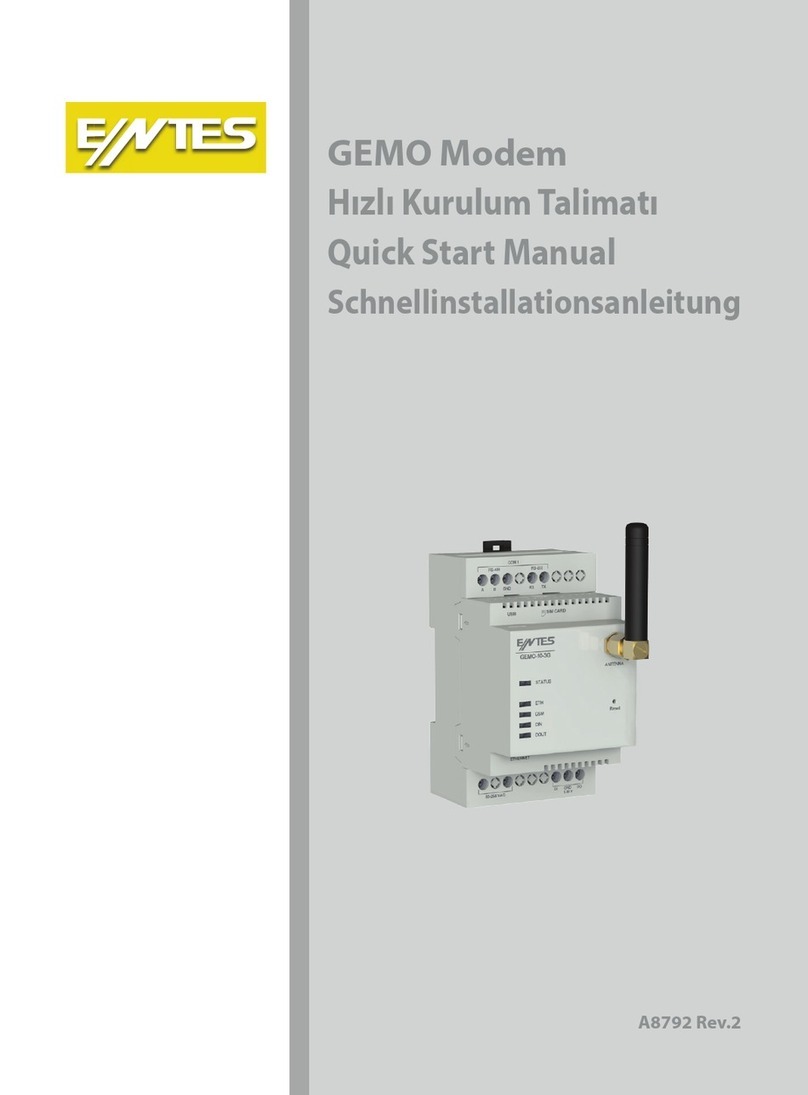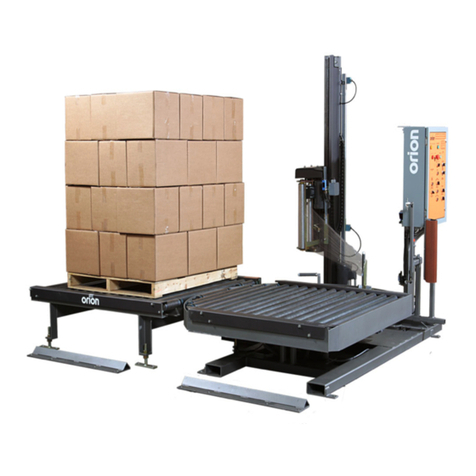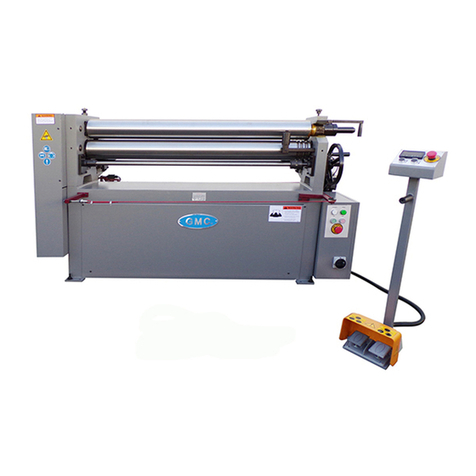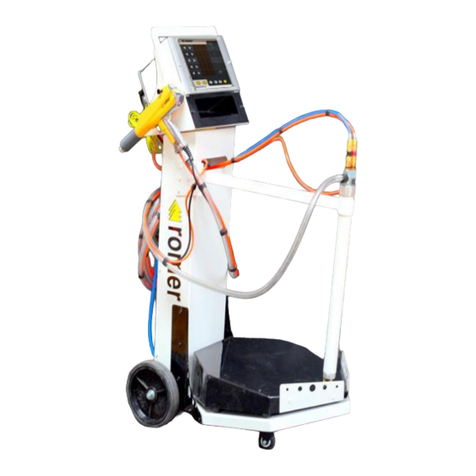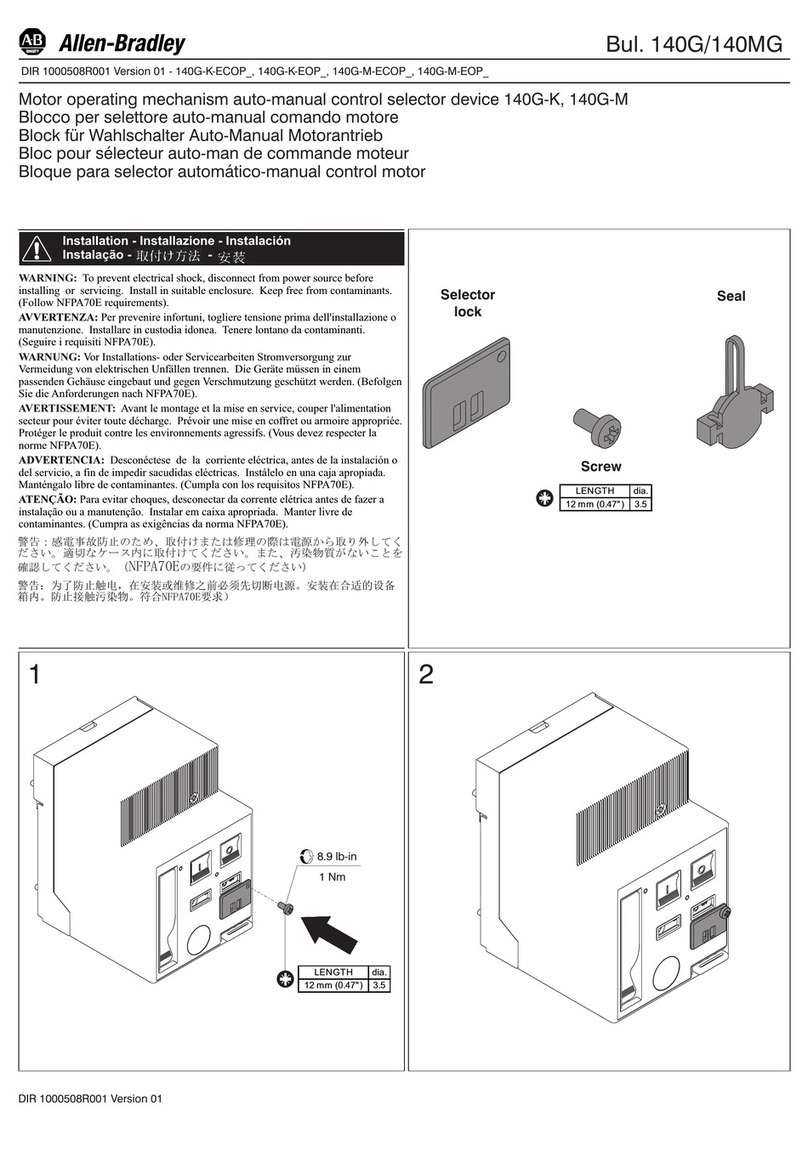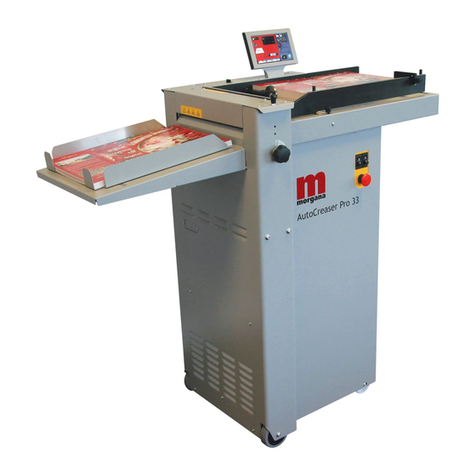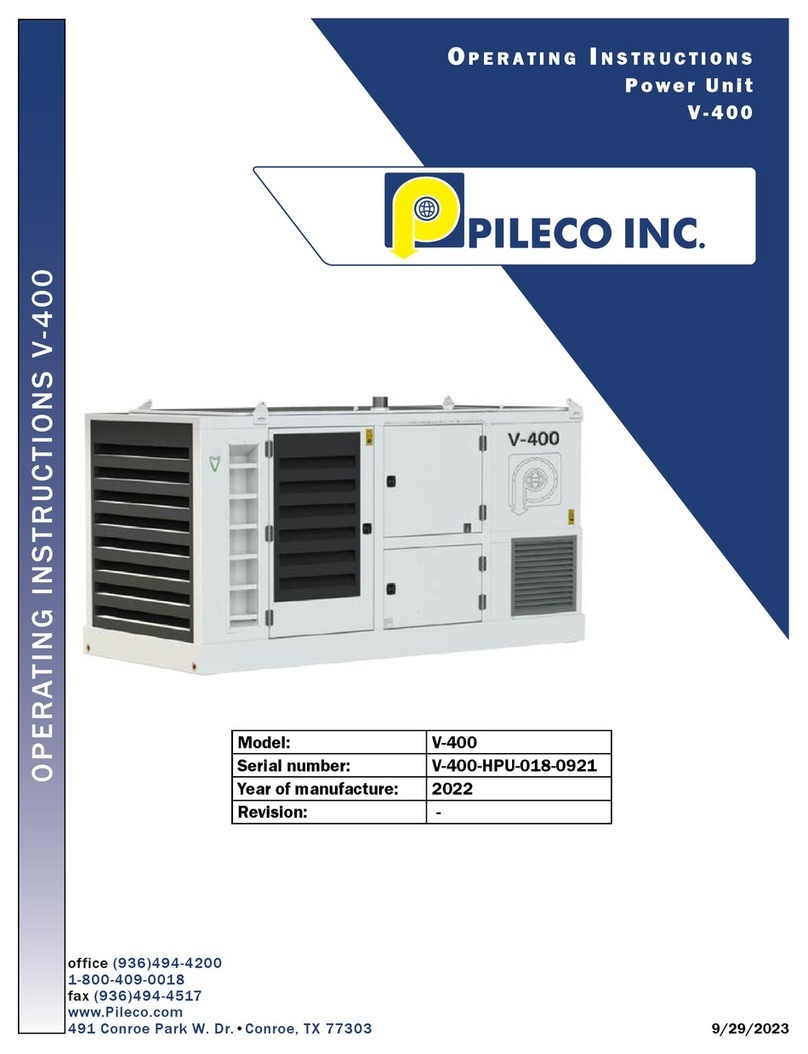Romus TORERO 94572 Instruction and safety manual

Read Manual Before Operating or
Servicing Machine
OPERATING & SERVICE
MANUAL - EN
SELF-PROPELLED TORERO STRIPPER
Ref. 94572
401891-ROM Rev D
www.romus.fr
www.romusworld.com

THIS PAGE INTENTIONALLY LEFT BLANK

Table of Contents
3
Table of Contents .......................................................................................................................................................... 3
Features & pecications............................................................................................................................................... 4
Safety.............................................................................................................................................................................. 5
General Rules for Safe Operation ......................................................................................................................... 5
Walk-Behind Scraper Safety Guidelines................................................................................................................ 6
Hydraulic Safety..................................................................................................................................................... 7
Electrical Practices ................................................................................................................................................ 8
Components and Assembly ......................................................................................................................................... 9
Transportation........................................................................................................................................................ 9
Wheel Modes......................................................................................................................................................... 9
Application Setup................................................................................................................................................. 10
Installing and Adjusting Slide Weights ................................................................................................................. 10
Operation.......................................................................................................................................................................11
Operating Controls................................................................................................................................................11
Start-Up Procedure...............................................................................................................................................11
Preparing Blades ..................................................................................................................................................11
Troubleshooting Guide ............................................................................................................................................... 13
Maintenance................................................................................................................................................................. 14
Wheel Cleaner Adjustment .................................................................................................................................. 14
Wheel Removal ................................................................................................................................................... 14
Adding or Changing Hydraulic Fluid .................................................................................................................... 14
Inspection of Internal Parts .................................................................................................................................. 14
Tank Removal ...................................................................................................................................................... 15
Power Cord.......................................................................................................................................................... 15
Isolators ............................................................................................................................................................... 15
Cutting Head Bearing .......................................................................................................................................... 15
Maintenance Schedule ........................................................................................................................................ 16
Parts List and Diagrams ............................................................................................................................................. 17
Overall Machine................................................................................................................................................... 17
Base Assembly .................................................................................................................................................... 18
Body..................................................................................................................................................................... 19
Weights................................................................................................................................................................ 20
Tank ..................................................................................................................................................................... 21
Cutting Head........................................................................................................................................................ 22
Bottom and Back Covers ..................................................................................................................................... 23
Motor Assembly ................................................................................................................................................... 24
Motor Parts .......................................................................................................................................................... 25
Pump ................................................................................................................................................................... 26
Hydraulic Motor Assembly ................................................................................................................................... 27
Eccentric, Chain and Belt .................................................................................................................................... 28
Idler Assembly ..................................................................................................................................................... 29
Wheels................................................................................................................................................................. 30
Front Wheel Assembly......................................................................................................................................... 31
Handle Assembly ................................................................................................................................................. 32
Front Cover ................................................................................................................................................... 33
Lower Sub-Assembly .................................................................................................................................... 34
Hydraulic Hoses ............................................................................................................................................ 35
Lever ............................................................................................................................................................. 36
Adjustment Rod............................................................................................................................................. 37
Speed Control Knob...................................................................................................................................... 38
Labels .................................................................................................................................................................. 38
Wiring Diagram .................................................................................................................................................... 39
Hydraulics ............................................................................................................................................................ 40
Warranty ....................................................................................................................................................................... 41
Note: The subjects dealt with in this manual are those expressly required by “Machine Directive 2006/42/EC” and the
technical details shown are those provided by the manufacturer at the time of compilation.
401891-ROM_RevD

Features and Specications
4
FEATURES
Speed Control Knob -Limits maximum forward speed.
Kickstand -Aids operator in tilting the machine back for easier mov-
ing and maneuvering.
Traction Wheels - Self-cleaning industrial-grade wheels that disen-
gage for loading/unloading.
Slide Weights - Applies additional pressure to the scraper head or
more traction to the wheels as needed.
Forward/Reverse Handles - Controls both speed and direction of
scraper with simple twist grips.
Lifting Bail Eyebolts -Eases loading/unloading.
Debris-Deecting Front Weight -Prohibits material and debris from
obstructing production.
Quick-Adjust Multi-Position Handle - Folds at over machine for
storage or transport; allows adjustment of handle angle to suit opera-
tor or work conditions.
Speed Control Knob
Kickstand
Traction Wheels
Forward/Reverse Handles
Lifting Bail Eyebolts
Debris-Deecting Front Weight
Slide Weights
Quick-Adjust Multi-Position Handle
Product Specications
Width Length Height Weight
(Machine Only) Weight* Motor
Power
Vibration
X Axis Y Axis Z Axis
45 cm
130 cm
(max. length)
74 cm
(handle folded)
117 cm
(max. height)
76 cm
(handle folded)
152.0 kg 192.8 kg 1.1 kW 3.2
m/s2
6.3
m/s2
4.8
m/s2
Input Power Amps (Full Load) RPM Speed
230V / 50 Hz 8A 2850 0-20 m/min
*Includes removable weights.
401891-ROM_RevD

Safety
Environment
Avoid use in dangerous environments.
Do not use in rain, damp or wet locations, or in the presence of
explosive atmospheres (gaseous fumes, dust, or ammable mate-
rials). Remove materials or debris that may be ignited by sparks.
Keep work area tidy and well-lit - a cluttered or dark work area may
lead to accidents. Extreme heat or cold may affect performance.
Protect others in the work area and be aware of surroundings.
Provide barriers or shields as needed to protect others from debris
and machine operation. Children and other bystanders should be
kept at a safe distance from the work area to avoid distracting the
operator and/or coming into contact with the machine. Operator
should be aware of who is around them and their proximity. Sup-
port personnel should never stand next to, in front of, or behind
the machine while the machine is running. Operator should look
behind them before backing up.
Do not come within 1 m of the machine’s perimeter during
operation.
Guard against electric shock.
Ensure that machine is connected to a properly grounded outlet.
Prevent bodily contact with grounded surfaces, e.g. pipes, radia-
tors, ranges, and refrigerators. When scoring or making cuts,
always check the work area for hidden wires or pipes.
5
GENERAL RULES FOR SAFE OPERATION
Before use, anyone operating or performing maintenance on this equipment must read and understand this manual, as well as any labels pack-
aged with or attached to the machine and its components. Read the manual carefully to learn equipment applications and limitations, as well as
potential hazards associated with this type of equipment. Keep manual near machine at all times.
Personal
Dress properly and use safety gear.
Do not wear loose clothing; it may be caught in moving parts.
Anyone in the work area must wear safety goggles or glasses and
hearing protection. Wear a dust mask for dusty operations. Hard
hats, face shields, safety shoes, etc. should be worn when speci-
ed or necessary.
Maintain control; stay alert.
Keep proper footing and balance, and maintain a rm grip. Ob-
serve surroundings at all times. Do not use when tired, distracted,
or under the inuence of drugs, alcohol, or any medication that
may cause decreased control.
Keep hands away from all moving parts and tooling.
Wear gloves when changing tooling. Remove tooling when ma-
chine is not in use and/or lower cutting head to the oor.
Do not force equipment.
Equipment will perform best at the rate for which it was designed.
Excessive force only causes operator fatigue, increased wear, and
reduced control.
Equipment
Use proper parts and accessories.
Only use manufacturer-approved or recommended parts and ac-
cessories. Using any that are not recommended may be hazard-
ous.
Ensure accessories are properly installed and maintained.
Do not permanently remove a guard or other safety device when
installing an accessory or attachment.
Inspect for damaged parts.
Check for misalignment, binding of moving parts, loose fasteners,
improper mounting, broken parts, and any other conditions that
may affect operation. If abnormal noise or vibration occurs, turn
the machine off immediately. Do not use damaged equipment until
repaired. Do not use if power switch does not turn machine on and
off. For all repairs, insist on only identical manufacturer replace-
ment parts.
Maintain equipment and labels.
Keep handles dry, clean, and free from oil and grease. Keep cut-
ting edges sharp and clean. Follow instructions for lubricating and
changing accessories. Motor and switches should be completely
enclosed at all times with no exposed wiring. Inspect cord regu-
larly.
Avoid accidental starting; store idle equipment.
When not in use, ensure that the machine is unplugged; do not
turn on before plugging in. Store in a dry, secured place. Remove
tooling when storing, and keep away from children.
Maintenance & Repairs
Begin maintenance work only when the machine is shut
down, unplugged, and cooled down.
Use proper cleaning agents.
Ensure that all cleaning rags are ber-free; do not use any aggres-
sive cleaning products.
Schedule regular maintenance check-ups.
Ensure machine is properly cleaned and serviced. Remove all
traces of oil, combustible fuel, or cleaning uids from the machine
and its connections and ttings. Retighten all loose ttings found
during maintenance and repair work. Loose or damaged parts
should be replaced immediately; use only manufacturer’s parts.
Do not weld or ame-cut on the machine during repairs, or
make changes to machine without authorization from manu-
facturer.
401891-ROM_RevD

WALK-BEHIND SCRAPER SAFETY GUIDELINES
Before use, anyone operating this equipment must read and understand these safety instructions.
6
WARNING: GRINDING/CUTTING/DRILLING OF MASONRY, CONCRETE, METAL AND OTHER MATERIALS CAN GENERATE DUST,
MISTS AND FUMES CONTAINING CHEMICALS KNOWN TO CAUSE SERIOUS FATAL INJURY OR ILLNESS, SUCH AS RESPIRATORY
DISEASE, CANCER, BIRTH DEFECTS OR OTHER REPRODUCTIVE HARM. IF YOU ARE UNFAMILIAR WITH THE RISKS ASSOCIATED
WITH THE PARTICULAR MATERIAL BEING CUT, REVIEW THE MATERIAL SAFETY DATA SHEET AND/OR CONSULT YOU EMPLOYER,
THE MATERIAL MANUFACTURER/SUPPLIER, GOVERNMENTAL AGENCIES SUCH AS OSHA AND NIOSH AND OTHER
AUTHORITIES ON HAZARDOUS MATERIALS. CALIFORNIA AND SOME OTHER AUTHORITIES, FOR INSTANCE, HAVE
PUBLISHED LISTS OF SUBSTANCES KNOWN TO CAUSE CANCER, REPRODUCTIVE TOXICITY, OR OTHER HARMFUL
EFFECTS. CONTROL DUST, MIST AND FUMES AT THE SOURCE WHERE POSSIBLE. IN THIS REGARD USE GOOD
WORK PRACTICES AND FOLLOW THE RECOMMENDATIONS OF THE MANUFACTURER/SUPPLIER, OSHA/NIOSH,
AND OCCUPATIONAL AND TRADE ASSOCIATIONS. WHEN THE HAZARDS FROM INHALATION OF DUST, MISTS AND
FUMES CANNOT BE ELIMINATED, THE OPERATOR AND ANY BYSTANDERS SHOULD ALWAYS WEAR A RESPIRATOR
APPROVED BY OSHA/MSHA FOR THE MATERIAL BEING CUT.
Scraping
Beware of hidden obtrusions.
Watch out for hidden dangers and protrusions in ooring. Do not
use on largely uneven surfaces.
Observe location of electrical supplies and extension cords.
Do not allow cutting heads to come into contact with any electrical
supply or extension cord.
Use correct tooling and accessories.
Provide barriers or shields as needed to protect others from debris.
After mounting tooling, check for proper alignment.
Use for correct applications.
Do not force equipment to do heavier duty work than it was made
for.
Safety
401891-ROM_RevD

Safety
7
HYDRAULIC SAFETY
Maintaining a Safe Work Environment
Establishing a safe work environment in and around your hydraulic equipment is extremely important. The easiest and most effective way to
avoid problems is to make sure associates understand their equipment, know how to operate the machines safely, and recognize the dangers if
handled carelessly. A few things to be aware of are:
• Pressure: Hydraulic uid under pressure is dangerous and can cause serious injury. Never look for a leak when unit is under pressure.
Using your hand could cause serious injury. A few common ways to encounter hydraulic uid under pressure include:
▪Pinhole: Fluid under pressure can cause serious injury. It can be almost invisible escaping from a pinhole, and it can pierce the skin
into the body.
▪ Leak: Keep ttings and hoses tight. Only check and service when not under pressure. Leaking hydraulic uid is hazardous; in addition
to making workplace oors slippery and dangerous, it also contaminates the environment. Before cleaning an oil spill, always check
EPA, state, and local regulations.
▪Burst: Whether due to improper selection or damage, a ruptured hose can cause injury. If it bursts, a worker can be burned, cut,
injected, or may slip and fall.
▪Coupling Blow-Off: If the assembly is not properly made or installed, the coupling could come off and hit or spray a worker, possibly
resulting in serious injury. Never operate machine without guards.
• Flammability: When ignited, some hydraulic uids can cause res and/or explode.With the exception of those comprised primarily of
water, all hydraulic uid is ammable (including many “re-resistant” hydraulic uids) when exposed to the proper conditions. Leaking pres-
surized hydraulic uids may develop a mist or ne spray that can ash or explode upon contact with a source of ignition. These explosions
can be very severe and could result in serious injury or death. Precautions should be taken to eliminate all ignition sources from contact
with escaping uids, sprays or mists resulting from hydraulic failures. Sources of ignition could be electrical discharges (sparks), open
ames, extremely high temperatures, sparks caused by metal -to -metal contact, etc.
• Mechanical: Hydraulic uid creates movement, which means some equipment may move. Observe surroundings and equipment at all
times.
• Moisture: Do not use in wet or high moisture conditions.
• Electrical: Faulty wiring can be an electrical hazard. A regular preventive maintenance program should always include a wiring check. If
applicable, disconnect battery before serving.
• Temperature: Because this machine operates at a relatively low pressure, overheating is not common. If surface of tank becomes too hot
to touch by hand (above 55°C), shut off machine and allow it to cool.
Hydraulic Fluid
Only use Texaco Rando 46 Hydraulic Oil or compatible uid like ISO or AW #46 from a brand name manufacturer. Non-compatible uids could
cause damage to unit or serious injury.
CAUTION: NEVER USE YOUR HANDS TO CHECK FOR LEAKS OVER HOSE OR HYDRAULIC CONNECTIONS. USE A PIECE OF CARD-
BOARD TO LOCATE A PRESSURIZED LEAK. FOR LOW PRESSURE LEAKS (DRIPS), USE A RAG TO CLEAN THE AREA AND DETERMINE
WHERE THE LEAK ORIGINATES.
DANGER: DO NOT TOUCH A PRESSURIZED HYDRAULIC HOSE ASSEMBLY WITH ANY PART OF THE BODY. IF FLUID PUNCTURES
THE SKIN, EVEN IF NO PAIN IS FELT, A SERIOUS EMERGENCY EXISTS. OBTAIN MEDICAL ASSISTANCE IMMEDIATELY. FAILURE TO DO
SO COULD RESULT IN LOSS OF THE INJURED BODY PART OR DEATH.
401891-ROM_RevD

ELECTRICAL PRACTICES
Extension Cord Requirements
• Ensure the cord type is suitable for the application and location. If you are unsure about your cord type, consult a qualied electrical profes-
sional or electrician.
• FULLY INSERT plug into outlet.
• Do not use excessive force to make connections.
• Never unplug by pulling the cord from the outlet. Pull plug rather than cord to reduce the risk of damage.
• Regularly examine your extension cord and ensure it is in good electrical condition. Never use a damaged cord—either replace it or have
it repaired by a qualied person.
• Protect your extension cords from sharp objects, excessive heat and damp or wet areas. Keep the cord away from oil, cutting edges and
moving parts.
• Do not drive, drag or place objects over cord.
• Avoid overheating. Uncoil cord and do not cover it with any material.
• Avoid accidental starting. Be sure equipment is turned off before plugging in. Do not use equipment if the power switch does not turn the
equipment on and off.
• Make sure equipment is not running before disconnecting cord.
• Unplug equipment. When not in use and before changing accessories or performing maintenance, unplug the machine.
Extension Cord Selection
All cords should be sized appropriately to reduce the risk of damage, re or reduced performance. Reference the table below for cord sizes.
Note: These cord sizes are based on a <10% voltage loss, data from the U.S. National Electrical Code Tables 400.5(A) & 400.5(B) and typical
resistances for copper wire.
Safety
8
Wire Size Max Length
16 AWG (1.5 mm2) 60 m
14 AWG (2.5 mm2) 120 m
WARNING: ELECTRICAL CORDS CAN BE HAZARDOUS. MISUSE CAN RESULT IN FIRE OR DEATH BY ELECTRICAL SHOCK. READ
CAREFULLY AND FOLLOW ALL DIRECTIONS.
CAUTION: ALWAYS FOLLOW APPLICABLE ELECTRICAL CODES, STANDARDS AND/OR REGULATIONS. CONSULT YOUR LOCAL
ELECTRICAL AUTHORITY OR A LICENSED ELECTRICIAN BEFORE ATTEMPTING TO MODIFY AN ELECTRICAL INSTALLATION. ENSURE
THAT CIRCUIT AND GROUND FAULT PROTECTION DEVICES AND ALL OTHER ELECTRICAL SAFETY EQUIPMENT ARE FUNCTIONING
PROPERLY.
WARNING: GROUND YOUR EQUIPMENT. THE EQUIPMENT MUST BE PLUGGED INTO AN APPROPRIATE OUTLET, ONE WHICH
IS PROPERLY INSTALLED AND GROUNDED IN ACCORDANCE WITH ALL CODES AND ORDINANCES. DO NOT MODIFY THE PLUG
PROVIDED WITH THE EQUIPMENT. NEVER REMOVE THE GROUNDING PRONG FROM THE PLUG.
WARNING: DO NOT REMOVE, BEND OR MODIFY ANY METAL PRONGS OR PINS OF THE PLUG. MODIFICATIONS TO POWER CORDS
AND/OR PLUGS MAY RESULT IN INJURY AND/OR EQUIPMENT DAMAGE.
401891-ROM_RevD

Components and Assembly
9
TRANSPORTATION
Attach/Remove Transport Wheels
Transport wheels help eliminate damage to the ooring and make moving the machine
easier. To attach transport wheels, complete the following steps:
1. Remove two outside blade cover bolts (Figure 1).
2. To ensure cutting head has enough clearance for front wheel assembly to t under,
tip machine back and block up the front (Figure 1.1).
3. Mount front wheel assembly over blade cover; re-place two outside blade cover
bolts (Figure 1.2).
4. Remove blocks.
Note: Do not leave machine in transport mode during transit without being secured.
To remove, reverse these steps.
Lifting Bail
The lifting bails make loading/unloading easier when when unable to use a ramp. Loca-
tion of lifting bails centers the balance of the machine, making it safe to pick up machine.
1. Place rope, hook system, or chain through eyelets located on top of machine.
2. Raise machine with a fork lift or winch.
3. Slowly lower to desired location.
Ramp Unloading
1. Put the wheels in “engage mode” (Figure 2).
2. Position ramp securely to back of vehicle; ensure there is good contact.
3. Position machine at the back of the truck, in line with the ramp.
4. Carefully move machine onto ramp, leaving the cutting head down (in contact with
ramp surface). Be cautious; machine is heavy.
5. Slowly back machine down ramp.
WHEEL MODES
Wheels engage and disengage for easier maneuverability. Wheels in the “engage mode”
are secured with axle pins (Figure 2), which engage the wheels so the machine can be
self-propelled.
When wheels are in the “disengage mode” (Figure 2.1), the machine can be moved freely
when not under power.
Disengaging Wheels
1. Lift ring outwards; slide pin up and off.
2. Repeat on second wheel.
Note: Keeping the axle pin facing straight up will make re-engaging easier.
FIG. 1
FIG. 1.1
FIG. 1.2
WARNING: NEVER HAVE TRANSPORT WHEEL ASSEMBLY MOUNTED
ON MACHINE OR WEHEELS DISENGAGED WHEN GOING UP OR DOWN A
LOADING RAMP OR INCLINE. FAILURE TO DO SO COULD CAUSE LOSS OF
CONTROL, DAMAGE TO MACHINE OR PROPERTY, OR SERIOUS INJURY.
CAUTION: REMOVE ALL COUNTER WEIGHTS AND BLADES AND ENSURE
WHEELS ARE IN “ENGAGE MODE” (FIGURE E) BEFORE LOADING OR
UNLOADING. FAILURE TO DO SO COULD RESULT IN PROPERTY DAMAGE
AND/OR PERSONAL INJURY.
FIG. 2
FIG. 2.1
401891-ROM_RevD

Components and Assembly
Re-engaging Wheels
1. Line up wheel hub hole and axle hole (Figure 3).
2. Insert pin and push ring over the hole so that it is parallel to the wheel.
3. Repeat on second wheel.
APPLICATION SETUP
VCT Tile
Never use a blade wider than the size of the tile being removed. If materials being
removed still do not come up clean or machine jumps on top of materials, reduce blade
size or use a smaller portion of the blade.
Pure Vinyl Rubber Tile
Materials will need to be scored down to 25.4-30.5 cm for proper removal. Self-scoring
blades can be used with some materials. A 25.4 cm blade is recommended for this ap-
plication.
Direct-Glued Carpet
Manufacturer recommends using a self-scoring blade. Normally 15.2-35.6 cm self-
scoring blades are used on direct-glued carpet, secondary-backed, unitary, double-glued,
vinyl foam and urethane foam.
Concrete
When working on concrete slab, a normal blade position is bevel up for best perfor-
mance, especially when cleaning adhesive. On occasion, bevel down gives better blade
life. Test each job for best performance.
Gypcrete and Soft-Poured Flooring
Requires blade bevel down to create a better wearing surface.
INSTALLING AND ADJUSTING SLIDE WEIGHTS
Installing Slide Weights
Orientate the slide weight with the long channel below the short channel. Install the long
channel over the heads of the two Allen bolts. Holding the slide weight in place, install the
hex bolt into the threaded hole aligned with the short channel. Tighten the hex bolt using
a 3/4” socket wrench to secure the weight to the side of the machine.
Adjusting Slide Weights
To adjust the slide weight forward or backward based on the job application, loosen the
hex bolt using a 3/4” socket wrench and gently slide the weight to the desired position.
After adjusting, retighten the hex bolt to secure the weight to the side of the machine.
10
FIG. 3
WARNING: ALWAYS ENSURE THE HEX BOLTS ARE TIGHT AND THE SLIDE
WEIGHTS ARE SECURE. UNSECURED WEIGHTS COULD SHIFT CAUSING
BODILY INJURY. USE CAUTION IF LOOSENING THE HEX BOLTS–IF BACKED
OUT TOO FAR, THE SLIDE WEIGHTS COULD DROP CAUSING BODILY INJURY.
401891-ROM_RevD

Operation
11
OPERATING CONTROLS
Speed Control (Figure 4)
• Turn speed control knob clockwise to decrease maximum forward speed.
• Turn speed control knob counterclockwise to increase maximum forward speed.
• Speed control knob can be adjusted while machine is running.
Forward/Reverse
• Push handles forward to move the machine forward.
• Pull handles backward to move the machine in reverse.
START-UP PROCEDURE
Starting the Machine
1. Plug machine into power source.
2. Turn speed control knob to slowest position (Figure 4).
3. Press ON/OFF switch to the “ON” position.
4. Push or pull the handles to move the machine forward or backwards.
Turning Off the Machine
Press ON/OFF switch to the “OFF” position to turn off machine.
PREPARING BLADES
Setting
Note: This machine is designed to remove soft good materials.
• Proper blade size and placement will affect performance, depending on the mate-
rial and sub-oor type.
• For difcult materials, use smaller blades.
• Start with a narrow blade, then increase blade size to optimize cutting pass. Nar-
rower blades work easier than wider blades and usually clean the oor better.
• Normally, bevel up is for concrete; bevel down is for wood.
• Keep blades sharp. Dull blades greatly affect the performance of the machine and
reduce cutting ability. Sharpen or replace blades as needed.
• Keep work area clean and clear of debris. After removing a portion of material,
move it out of the way.
• For wood or wood-like oors, pound down or remove any nails or metal obstruc-
tions to avoid blade damage.
• Blades can be offset in the cutting head for easier access to toe kicks or for removal
along the wall (Figure 5).
• Sheet vinyl, solid vinyl, rubber tile, urethane, or PVC sheet roong will need to be
scored for best removal results. Using a self-scoring blade is recommended.
FIG. 5
FIG. 4
CAUTION: BLADES ARE SHARP. USE EXTREME CAUTION WHEN
HANDLING. NEVER CHANGE CUTTING HEAD OR SERVICE BLADES WHILE
MACHINE IS RUNNING. ALWAYS WEAR GLOVES WHILE HANDLING BLADES.
SLOWERFASTER
401891-ROM_RevD

Operation
MACHINED EDGE
(BLADE STOP)
BLADE
FIG. 6.1
FIG. 6.2
• Self-scoring blades are available in a number of sizes; these blades eliminate the
need for pre-scoring material. Depending upon the type of material being removed
and the sharpness of the blade and scoring wings, the self-scoring blades may
make it harder to control the machine. Keep scoring wings sharp at all times.
Blade Changing
1. Block up the front of the machine (Figure 6) using a at piece of wood or something
similar.
2. Use the supplied extended 6 mm Hex wrench to keep hand safely away from the
blade. Loosen the ve hex drive bolts (Figure 6.1), it is not necessary to remove
them completely.
3. Place blade into the cutting head and slide back until fully seated against the ma-
chined edge (Figure 6.2).
Note: Do not insert blade all the way back to the bolts. Incorrect installation of
blade will cause insufcient clamping leading to premature blade wear and dam-
age.
If the blade is wider than the cutting head, center the blade to the head. If the blade
is smaller than the cutting head, the blade should be mounted in the center of the
cutting head during the rst pass. After the rst pass is made, the blade can be off-
set in the head to allow the wheels to keep even contact with the oor and provide
easy access to the wall.
4. Tighten the bolts.
Blade Sharpening
Always check for blade sharpness before using. Over time, the used blades will develop
a back bevel. While sharpening, blades will not recover entirely until the back bevel is
completely leveled out.
Note: Thinner blades are easier to sharpen, but they also break easier.
• Grind blade using a 10 cm diameter disk with 120 or ner grit. Be careful not to
catch disk on the edge or corner of the blade.
• Pass grinder along blade edge starting on one end and continuing in one direction
being careful to hold grinder at proper angle for the blade. Grind until sharp.
• While using a high quality ne tooth hand le, follow the same procedure as above.
• Have plenty of sharp blades on each job so that on-the-job blade sharpening is
eliminated.
• It is best to sharpen blades on a proper bench or belt grinder in the shop.
Sharpening Self-Scoring Blades (Figure 7): It is important to keep the “wings” on these
self-scoring blades sharp. Use a le on the edge; sharpen the at part of the blade as
described above.
Sharpening Carbide-Tipped Shanks: To sharpen carbide-tipped shanks, a carbide
grinding wheel is necessary (e.g. silicon carbide or green wheel).
FIG. 7
12
FRONT OF BLADE
SELF-SCORING
WING
FIG. 6
401891-ROM_RevD

Troubleshooting Guide
Problem Cause Solution
Machine will not start. Insufcient power. Ensure use of properly rated extension cord.
Loose capacitor leads. Check capacitor leads to ensure good connection.
Overload button on motor has been tripped. Button is located on the bottom of the electric box on
motor. If tripped, hold button in until it clicks.
Faulty ON/OFF switch. Replace if needed.
Machine will not move under power. Speed control is set too slow. Turn speed control knob counterclockwise until the
machine goes forward.
Wheels are not in the “engage mode”. Install wheel pins for “engage mode”.
Broken belt. Remove wheels and bottom cover to inspect. Replace
if needed.
Broken chain. Remove wheels and bottom cover to inspect; repair or
replace if needed.
Control handle mechanism failure. Inspect control mechanism; repair or replace as
needed.
Motor is humming, but machine does not run
or breakers are blown.
Failed isolators. Remove wheels and bottom cover to inspect.
Failed capacitors. Replace as needed.
Motor start switch connections are dirty. Remove fan cover and fan. Clean the motor start
switch (set of points) with an emery board or cloth
between the points; reassemble.
Machine is leaking hydraulic uid. Leak in hose(s). Tighten; replace if needed.
Hydraulic ttings are loose. Tighten; replace if needed.
Motor is heating up. Motor shaft is binding. Remove wheels and cover to inspect isolators. Inspect
cutting head bearing and eccentric to ensure that they
are not binding. If issue continues, contact manufac-
turer for additional support.
13 401891-ROM_RevD

Maintenance
14
WHEEL CLEANER ADJUSTMENT
1. Loosen wheel cleaner with 9/16” wrench (Figure 1).
2. Slide cleaner up to the face of the wheel until it touches, but does not dig into the
wheel surface.
3. Re-tighten rmly. Note: Too much interference between the wheel and cleaner will
damage wheel.
WHEEL REMOVAL
1. Turn off and unplug machine.
2. Examine back of wheels for built-up debris.
3. Remove yarn build-up.
4. Place block under machine between wheels.
5. Disengage and remove axle pin (Figure 2).
6. Remove wheel-securing screw with a 5mm hex wrench (Figure 2).
7. Remove wheel-securing cap. Wheel will slide off.
8. Remove wheel spacer. This should be inspected at regular intervals.
9. Relubricate bearing inside wheel before reassembly.
ADDING OR CHANGING HYDRAULIC FLUID
• Change or add uid when needed; check uid level if there has been a leak, dam-
aged or ruptured hose, or a loose tting. Fluid should be level with bottom of tank
plug hole (Figure 3).
• To add uid, unscrew ller port cap from top of machine (Figure 4); add uid
through a lter or funnel with a screen to keep uid clean.
• To change uid, remove ller port cap. Remove drain plug from side of machine
(Figure 4). An 8 liter container will be needed to drain the uid into. (Fluid will not
be removed from hoses.) Regardless of the machine’s straining system, add uid
through a lter or funnel with a screen to keep uid clean.
INSPECTION OF INTERNAL PARTS
Visual inspection of internal parts can be done without draining the tank.
1. Remove two lifting bail eyebolts and the two bolts from the back of the tank.
2. Carefully lift tank 8-10 cm.
3. Using a ashlight, inspect the drive chain, hoses, front seal on hydraulic motor, and
suction and pressure line on pump.
4. If service is necessary, follow the procedure for tank removal.
FIG. 1
FIG. 3
FIG. 4
WARNING: ALWAYS UNPLUG MACHINE BEFORE PERFORMING MAINTE-
NANCE.
Wheel
Cleaner
Tank Plug
Hole
Filler Port
Cap
Drain
Plug
FIG. 2
Axle Pin
Wheel
Securing
Screw
401891-ROM_RevD

Maintenance
TANK REMOVAL
It is necessary to remove the tank in order to repair the pump, or to replace or service internal hoses.
1. Drain tank by removing the top ller port cap and drain plug on the side of the machine (Figure 4). An 8 liter container will be needed to
drain the uid into.
2. Replace drain plug and ller port cap.
3. Remove two lifting bail eyebolts and the two bolts from the back of the tank.
4. Disconnect return line on the back of the tank; carefully lift tank 8-10 cm and disconnect suction line. The tank can now be removed.
POWER CORD
If the power cord is damaged, it must be replaced by the manufacturer or a qualied professional.
ISOLATORS
Inspection
1. Perform the wheel removal procedure to access the bottom cover.
2. Remove one wheel at a time; remove the bottom cover bolt behind each wheel.
3. Carefully remove the bottom cover to expose the underside.
4. Inspect the isolators from the side for damage or wear.
Replacement
1. Remove the side slide weights, side weights, and front weight.
2. Loosen the seven socket head cap screws holding the isolators in place. Grip each isolator with locking pliers to aid in loosening.
3. Remove and replace each isolator. It is recommended adding red threadlocker to the threads of the cap screws when reinstalling.
CUTTING HEAD BEARING
Inspection
1. Perform the wheel removal procedure to access the bottom cover.
2. Remove one wheel at a time; remove the bottom cover bolt behind each wheel.
3. Carefully remove the bottom cover to expose the underside.
4. Inspect the cutting head bearing for damage or wear.
Replacement
1. Remove the bottom cover.
2. Remove the cutting head bearing from the cutting head by removing the four bolts that hold down the bearing.
3. Replace the cutting head bearing and re-tighten the four bolts.
4. Place the bottom cover and re-tighten the eight bolts that hold the bottom cover in place.
15 401891-ROM_RevD

Maintenance
16
Maintenance To Be Performed Interval
Daily 50 hrs 1000 hrs 2000 hrs
Inspect fasteners, wheels and blade holders for damage. ●
Clean built-up glue and debris from wheels, front weight, and blade holder. ●
Visually inspect internal parts. ●
Inspect safety devices and switches (power cord, wheel cleaners, switches). ●
Inspect and replace isolators. ●
Inspect and replace cutting head bearing. ●
Change hydraulic uid. ●
401891-ROM_RevD

Parts List and Diagrams
17
ITEM
NO. PART NO. DESCRIPTION QTY.
1404581-011 Assembly, Commander Handle, EUR 1
2401546 Motor, Hydraulic, Sub, 6280 1
36280-299 Wheel Assembly, Front 1
45280-137W Wrench, Blade, 6mm 1
5401639 Subassembly, Base, 6280, Metric 1
674650 Bolt, Wizlock, M10-1.5 x 25mm, Class 8.8 3
401891-ROM_RevD
ECCENTRIC, CHAIN AND
PUMP PARTS
BELT PARTS
TANK PARTS
MOTOR PARTS
BOTTOM & BACK COVERS
CUTTING HEAD
BODY PARTS
3
WHEEL PARTS
62
5
4
PARTS
1
WEIGHT PARTS
ITEM
NO. .YTQNOITPIRCSEDREBMUNTRAP
1V511,eldnaHrednammoC,ylbmessA7751041
10826,buS,ciluardyH,rotoM6451042
1tnorF,ylbmessAleehW992-08263
123/7,nellA,hcnerWB104-08264
56280S-BASEASSYSubassembly, Base, 6280, 7 Isolators 1
31x61-8/3egnalF,tloB222376
OVERALL MACHINE

Parts List and Diagrams
18
ITEM
NO. PART NO. DESCRIPTION QTY.
1* 401541 Sprocket, Axle, Heavy Duty 1
273012 Screw, Set, Cup Point, 1/4-20x3/8 2
3401627 Pump Drive Assembly, Splined 1
46280-103-1M Shaft, Axle, Metric 1
56280-103A Ring, Retaining, Axial, 1” 3
66280-105LM Support, Axle Bearing, Metric, Left 1
76280-105RM Support, Axle Bearing, Metric, Right 1
86280-145 Cover, Front 1
9405950 Isolator, Vibration, 2 x 1-5/8, M/F, Neoprene 7
10* 404592Assembly, Plate, Base, Metric, 6280 1
11 71115 Bearing, 1x2x1/2 1
12 71132 Bearing, 1-1/4 1
13 73033 Key, 1/4x1/4x1 1
14 73217 Screw, Socket Head Cap, Low, 3/8-16x3/4 7
15 73310 Screw, Socket Head Cap, 5/16-18x7/8, Black Oxide 4
16 74631 Bolt, Wizlock, M6-1.0 x 16, Plain 2
17 71115 Bearing, 1x2x1/2 2
401891-ROM_RevD
6
13
4
2
5
17
7
15
5
10*
8
16
3
12
14
11
1*
9
ITEM
NO.
6280-10XXXX
6280-12XXXX
6280-23XXXX
6280-11XXXX
6280-13XXXX
6280-15XXXX
6280-20XXXX
6280-26XXXX
6280-28XXXX
6280-33XXXX
DESCRIPTION
QTY.
1
401541 401541
Sprocket, Axle, Heavy Duty
1
2
73012 73012
Screw, Set, 1/4-20 x 3/8
2
3
401627 401627
Pump Drive Assembly, Splined
1
4
6280-103-1
6280-103-1M
Shaft, Axle
1
5
6280-103A 6280-103A
Ring, Retaining, Ext, Axial, 1"
3
6
6280-105L
6280-105LM
Support, Axle Bearing, Left
1
7
6280-105R
6280-105RM
Support, Axle Bearing, Right
1
8
6280-145 6280-145
Cover, Front
1
9
6280HD-107
401526
Plate, Base, 6280HD
110
70810 70810
Isolator, Vibration
7
11
71115 71115
Bearing, 1x2x1/2
3
12
71132 71132
Bearing, 1-1/4
1
13
73033 73033
Key, 1/4 x 1/4 x 1"
1
14
73217 73217
Screw, Socket Head Cap, Low, 3/8-16 x 3/4
7
15
73310 73310
Screw, Socket Head Cap, Grade 5 5/16-18x7/8
4
16
73332
Bolt, Hex Head Cap 5/16-18x5/8
2
74631
Bolt, Hex Flange Bolt M6-16
2
*Item 1 includes Item 2. Item 10 includes Items 11 and 12.
BASE ASSEMBLY 401639

Parts List and Diagrams
19 401891-ROM_RevD
ITEM
NO. PART NO. DESCRIPTION QTY.
16280-156L Body, Main, Upper, Left 1
26280-156R Body, Main, Upper, Right 1
36280-165 Cleaner, Wheel 2
473204 Washer, Lock, 3/8 4
573201 Screw, Hex Head Cap, 3/8-16 x 1 4
673264 Washer, Flat, Zinc USS 3/8 4
7401848 Screw, Socket Head Cap, M8-1.25x25, Black Oxide 4
873303 Washer, Split Lock, 5/16 4
974763 Grommet, Rubber 1/2” 1
1
5
4
6
3
87
2
9
ITEM
NO.
6280-10XXXX
6280-12XXXX
6280-23XXXX
6280-11XXXX
6280-13XXXX
6280-15XXXX
6280-20XXXX
6280-26XXXX
6280-28XXXX
6280-33XXXX
DESCRIPTION QTY.
1 6280-156L 6280-156L Body, Main, Upper, Left 1
2 6280-156R 6280-156R Body, Main, Upper, Right 1
3 6280-165 6280-165 Cleaner, Wheel 2
4 73204 73204 Washer, Lock, 3/8 4
5 73201 73201 Screw, Hex Head Cap, 3/8-16 x 1 4
6 73264 73264 Washer, Flat, Zinc USS 3/8 4
773311 Screw, Socket Head Cap, 5/16-18 x 1 4
401848 Screw, Socket Head Cap, M8-1.25 x 25
8 73303 73303 Washer, Split Lock 5/16 4
9 74763 74763 Grommet, Rubber 1/2" 1
BODY

Parts List and Diagrams
20
ITEM
NO. PART NO. DESCRIPTION QTY.
1400184 Screw, Hex Head Cap, M10-1.5 x 90, Class 8.8, Clear Zinc 2
274657 Washer, Lock, M10 2
374655 Washer, Flat, M10 2
4404745 Weight, Front, No Logo, Silver Vein 1
574853-BLK Weight, Side, Black 2
674851-SV Weight, Slide, Silver Vein 2
7405980 Spacer, Side Weight, Commander 2
8406618 Screw, Hex Head Cap, 1/2-13 x 4-1/4, Grade 5, Clear Zinc 2
9406619 Screw, Socket Head Cap, 1/2-13 x 3-1/4, Black Oxide 4
10 73403 Washer, Split lock 1/2 6
11 73424 Washer, Flat, Zinc SAE 1/2 6
401891-ROM_RevD
WEIGHTS
ITEM
NO.
6280-10XXXX
6280-23XXXX6280-12XXXX
6280-11XXXX
6280-13XXXX
6280-20XXXX
6280-26XXXX
6280-28XXXX
6280-33XXXX
.YTQNOITPIRCSEDXXXX51-0826
14/3-3x61-8/3,daeHxeH,tloB962004962004 2
400184400184Bolt, M10-1.5 x 90, HHCS
28/3,kcoL,rehsaW4023740237 2
7465774657Washer, Lock, M10
38/3cniZEAStalF,rehsaW36237 2
7465574655Washer, Flat, M10
4
74852-SV
74852-G
74852-SV
74852-O
Weight, Front, Green
Weight, Front, Orange
Weight, Front, Silver Vein
1
2thgiewediSKLB-35847KLB-35847KLB-35847KLB-358475
6
74851-SV
74851-G
74851-SV
74851-O
Weight, Slide, Green
Weight, Slide, Orange
Weight, Slide, Silver Vein
2
7405980405980405980405980Spacer, Side Weight, Commander 1
8406618406618406618406618Screw, Hex Head Cap, 1/2-13 x 4-1/4,
Grade 5, Clear Zinc2
9406619406619406619406619Screw, Socket Head Cap, 1/2-13 x 3-1/4,
Black Oxide 4
10 73403734037340373403Washer, Split lock 1/2 6
11 73424734247342473424Washer, Flat, Zinc SAE 1/2 6
765
2
4
3
1
11 10 9
11 10 8
Table of contents
Other Romus Industrial Equipment manuals


